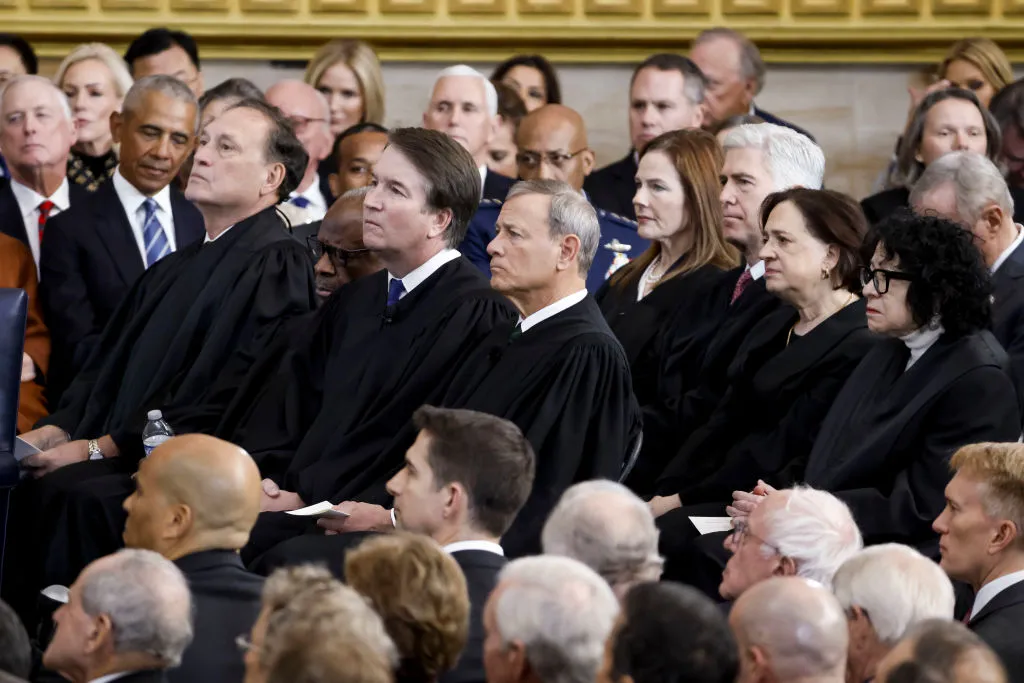How a mail delivery dispute made it to the Supreme Court


On Oct. 8 in U.S. Postal Service v. Konan, the court will weigh in on a disagreement among the federal courts of appeals over when the government can be sued over undelivered mail in a case that likely will come down to the justices’ interpretation of two words: “loss” and “miscarriage.”
The dispute began when a landlady named Lebene Konan realized that the mailbox key for one of her two properties in Euless, Texas, no longer worked. As a result, she couldn’t retrieve mail for her tenants at that address, which she typically collected from the shared mailbox and distributed.
When Konan contacted the local post office, she learned she wouldn’t get a new key or receive mail at the address until she proved she was the property owner. She satisfied that requirement, but it did little to solve her mail delivery problems.
Konan alleges that before and after the new key was issued, two local employees of the U.S. Postal Service led “a campaign of racial harassment” against her, which involved repeatedly refusing to deliver mail for her or her tenants, imposing onerous identification requirements, and sending several items back to the sender. Konan further alleges that when she asked for all mail to be held at the post office, she faced additional administrative hurdles when picking it up.
Konan estimates that she “filed more than 50 administrative complaints” before suing the two employees, the U.S. Postal Service, and the United States for, among other things, emotional distress, damages related to losing access to sensitive pieces of mail (like medical records), and damages related to her struggle to find and keep tenants after the conflict began. Her claims against the two employees were dismissed, so the Supreme Court case centers on her claims against the USPS and United States under the Federal Tort Claims Act.
The Federal Tort Claims Act waives the United States’ sovereign immunity, thus allowing it to be sued, in “suits seeking damages ‘for injury or loss of property, or personal injury or death caused by the negligent or wrongful act or omission’ of an employee of the federal government ‘under circumstances where the United States, if a private person, would be liable to the claimant in accordance with’” local law, as the government explained when it asked the court to review the case. But the act’s waiver is not all encompassing. Among other limitations, the law includes a postal exception, which keeps sovereign immunity in place for claims “arising out of the loss, miscarriage, or negligent transmission of letters or postal matter.”
In U.S. Postal Service v. Konan, the government contends that Konan’s lawsuit over the intentional nondelivery of her mail falls within the postal exception because it arises from the “loss” and “miscarriage” of mail, and that it therefore should be dismissed. Konan, on the other hand, contends that the postal exception does not apply to the kind of intentional mistreatment of letters and packages that she alleges took place.
Both sides agree that the case boils down to, as the government put it, “a pure question of statutory interpretation.” The justices must determine what “loss” and “miscarriage” mean in the context of the Federal Tort Claims Act’s postal exception. As a result, a large portion of the briefs submitted in the case is dedicated to defining those two words.
In the government’s brief on the merits, U.S. Solicitor General D. John Sauer contended that Konan’s claims alleging that postal workers “intentionally refused” to deliver her mail fall under the postal exception because such nondelivery satisfies “the ordinary meaning” of both “miscarriage” and “loss.” Neither term requires postal workers’ actions to be unintentional, Sauer said. “Just as a miscarriage of justice can be the result of intentional wrongdoing, so too can a miscarriage of mail,” he wrote.
Intentional nondelivery, Sauer added, also falls within the definitions for those terms offered by the Supreme Court in a 2006 decision on the postal exception, in which it held that a woman could sue the USPS after tripping over mail that was left on her porch. “In so holding, the Court interpreted the exception ‘to retain immunity, as a general rule, only for injuries arising, directly or consequentially, because mail either fails to arrive at all or arrives late, in damaged condition, or at the wrong address.’” Sauer wrote that the phrase “fails to arrive at all” encapsulates the kind of intentional nondelivery that Konan has described.
Sauer also said that a ruling for Konan would cut against the purpose of the postal exception and “expose the government to precisely the kinds of suits that Congress meant to foreclose.” USPS “handles more than 300 million pieces of mail on any given day. Under the logic of the decision below, any person whose mail is not properly delivered could bring an FTCA suit—and potentially proceed to burdensome discovery—so long as she alleges that a postal employee acted intentionally,” according to the government’s brief.
Konan’s attorneys rejected the government’s broad definitions of “loss” and “miscarriage” in her response brief, contending that they were not meant to address intentional conduct. “To be sure, each of the terms in the statute—‘loss,’ ‘miscarriage,’ and ‘negligent transmission’— might, in isolation or in another statute, take on a different or broader meaning. … But the Government’s aggressive reading can’t be squared with the way Congress drafted” the exception, Konan’s brief said.
Konan’s attorneys urged the Supreme Court to affirm the U.S. Court of Appeals for the 5th Circuit’s decision, in which it held that “there was no ‘loss’ of mail because the mail was not destroyed or misplaced by unintentional action” and “there was no ‘miscarriage’ because there was no attempt at a carriage.” But even if the court disagrees with that holding, it shouldn’t dismiss Konan’s case, the brief said, because further proceedings are needed to address the claims Konan made about the postal workers’ treatment of her before and during the dispute over their treatment of her mail.
Konan’s attorneys also rejected Sauer’s claim that adopting their interpretation of the postal exception would lead to “endless litigation,” contending that the government is acting as if Konan was dealing with something like a “missing package.” An inconvenience like that is unlikely to prompt someone to pay “the $405 filing fee—not to mention the cost of hiring a lawyer” to sue the USPS. Rather than dealing with a missing package or two, they said, Konan faced a years-long struggle with local postal workers and turned to litigation only after trying every other “strategy possible to get her mail delivered.”
Posted in Court News, Merits Cases
Cases: United States Postal Service v. Konan